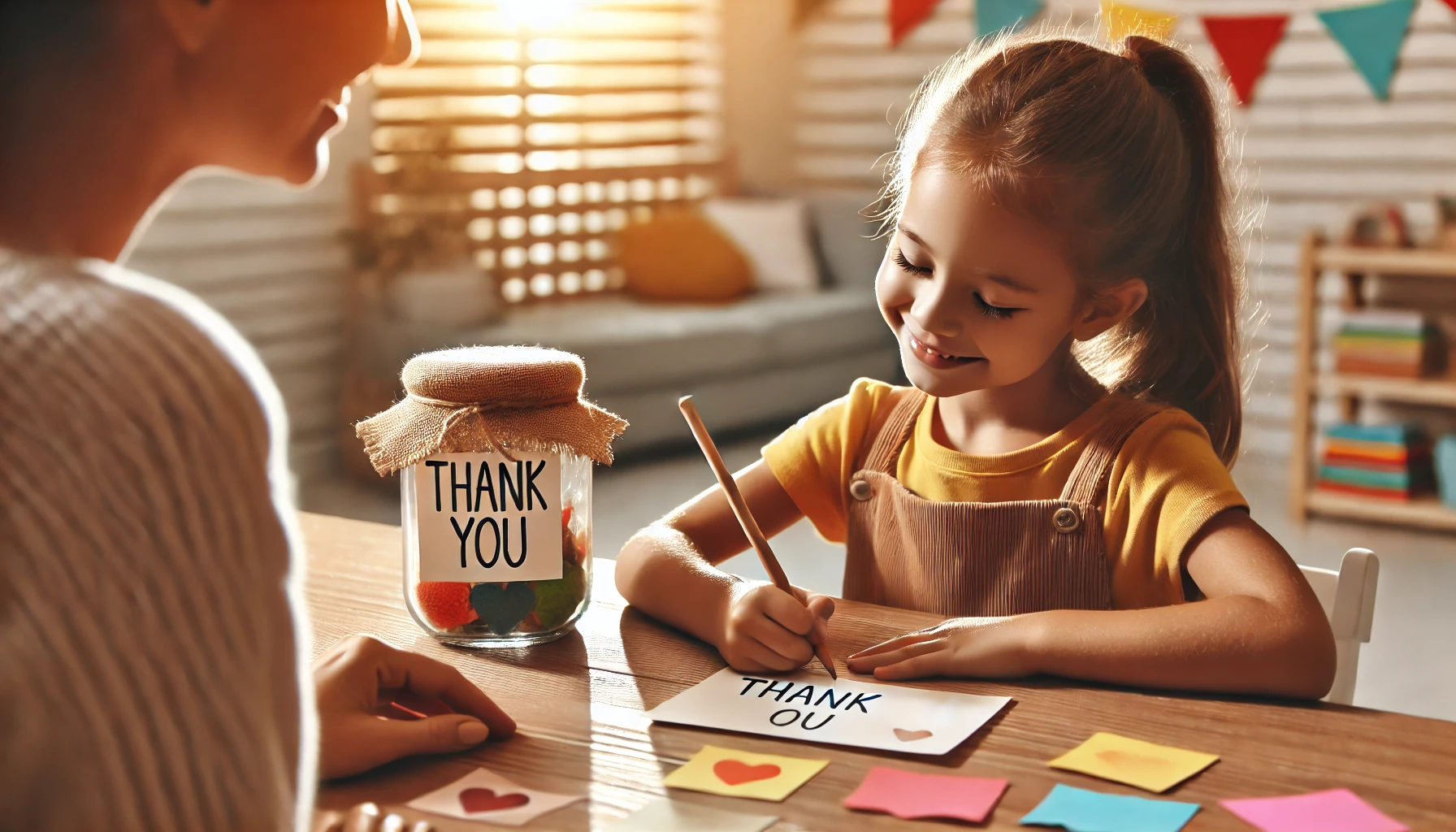How to Teach Young Children About Gratitude and Appreciating What They Have
Teaching young children about gratitude helps them develop a positive mindset, empathy, and appreciation for what they have. When kids learn to recognize and express thankfulness, they become more mindful of the kindness around them and develop a habit of appreciating small joys in life. Parents can encourage gratitude through storytelling, daily routines, and interactive activities. In this article, we’ll explore practical ways to help children understand and practice gratitude.
Why Teaching Gratitude is Important
- Encourages a positive mindset – Helps kids focus on what they have rather than what they lack.
- Builds empathy – Teaches children to appreciate the kindness of others.
- Strengthens relationships – Encourages kids to express thanks and appreciation.
- Promotes happiness and well-being – Gratitude has been linked to increased life satisfaction.
- Develops mindfulness – Helps children recognize small moments of joy in daily life.
1. Teach Kids What Gratitude Means in Simple Terms
Helping children understand gratitude in an easy way encourages them to practice it.
Activity Idea:
- Use a simple definition: “Gratitude means being thankful for the good things in your life.”
- Give examples: “I am grateful for my family, my home, and my favorite toy.”
- Ask, “What is something you feel thankful for today?”
What Kids Learn:
- That gratitude means appreciating what they already have.
- How to recognize kindness and generosity.
- The importance of expressing thanks for big and small things.
2. Create a Daily Gratitude Routine
Making gratitude a habit helps children develop a thankful mindset.
Activity Idea:
- At bedtime, ask, “What was your favorite part of today?”
- Start a gratitude jar, where kids write or draw things they are thankful for.
- During meals, go around the table and say one thing everyone appreciates.
What Kids Learn:
- That gratitude is a daily practice, not just for special occasions.
- How to reflect on positive moments in their day.
- The value of recognizing and appreciating good things in life.
3. Read Books About Gratitude and Appreciation
Stories help children relate to characters who learn about thankfulness.
Activity Idea:
- Read The Thank You Book by Mo Willems (teaches the importance of saying thank you).
- Pause and ask, “Why do you think the characters felt grateful?”
- Encourage kids to share a time they felt thankful.
What Kids Learn:
- That expressing gratitude makes others feel valued.
- How small acts of kindness deserve appreciation.
- The importance of saying “thank you” in different situations.
4. Encourage Kids to Say “Thank You” Often
Teaching children to express thanks regularly makes gratitude a natural habit.
Activity Idea:
- Remind kids to say “thank you” when someone helps them.
- Encourage thank-you notes or drawings for friends, teachers, or family members.
- Model gratitude by saying, “Thank you for your help today!”
What Kids Learn:
- That saying “thank you” makes others feel appreciated.
- How to recognize kindness in everyday moments.
- The power of expressing gratitude in words.
5. Teach Kids to Appreciate Non-Material Things
Helping children see gratitude beyond gifts encourages appreciation for experiences and relationships.
Activity Idea:
- Ask, “What made you happy today that wasn’t a toy or a treat?”
- Encourage kids to notice nature, friendships, and fun moments.
- Help them create a “Thankful List” with things they appreciate that aren’t physical objects.
What Kids Learn:
- That gratitude isn’t just about things—it’s also about experiences and people.
- How to recognize non-material joys in life.
- The importance of appreciating simple moments.
6. Encourage Acts of Kindness and Giving
Helping children experience the joy of giving teaches appreciation and generosity.
Activity Idea:
- Have kids donate old toys or clothes and talk about why helping others matters.
- Let them make small gifts or thank-you notes for friends and family.
- Praise their generosity: “That was so kind of you to share!”
What Kids Learn:
- That giving can bring happiness to both the giver and receiver.
- How gratitude and kindness go hand in hand.
- The value of sharing and helping others.
7. Practice Mindfulness to Help Kids Notice the Good Around Them
Teaching children to slow down and be present helps them recognize things to be grateful for.
Activity Idea:
- Go on a “gratitude walk” and point out things to appreciate, like flowers, sunshine, or birds.
- Encourage deep breathing exercises, focusing on things they are thankful for.
- Ask kids to close their eyes and think of three things that make them happy.
What Kids Learn:
- That gratitude comes from paying attention to the world around them.
- How mindfulness helps them recognize happiness in simple things.
- The importance of being present and appreciating the moment.
8. Praise and Reinforce Gratitude
Encouraging children when they show appreciation motivates them to continue practicing gratitude.
Activity Idea:
- Say, “I love how you thanked your friend for helping you!”
- Use a “Gratitude Star Chart”, where kids earn stars for showing thankfulness.
- Ask, “How did it feel to say thank you today?” to reinforce self-awareness.
What Kids Learn:
- That gratitude is a skill that grows with practice.
- How expressing thanks makes them and others feel happy.
- The motivation to keep noticing and appreciating the good in life.
Final Thoughts
Teaching young children about gratitude and appreciating what they have helps them develop a positive outlook, empathy, and strong social skills. By modeling thankfulness, creating daily gratitude habits, and reinforcing appreciative behavior, parents can guide children toward becoming thoughtful and grateful individuals who recognize and celebrate the kindness and good around them.
